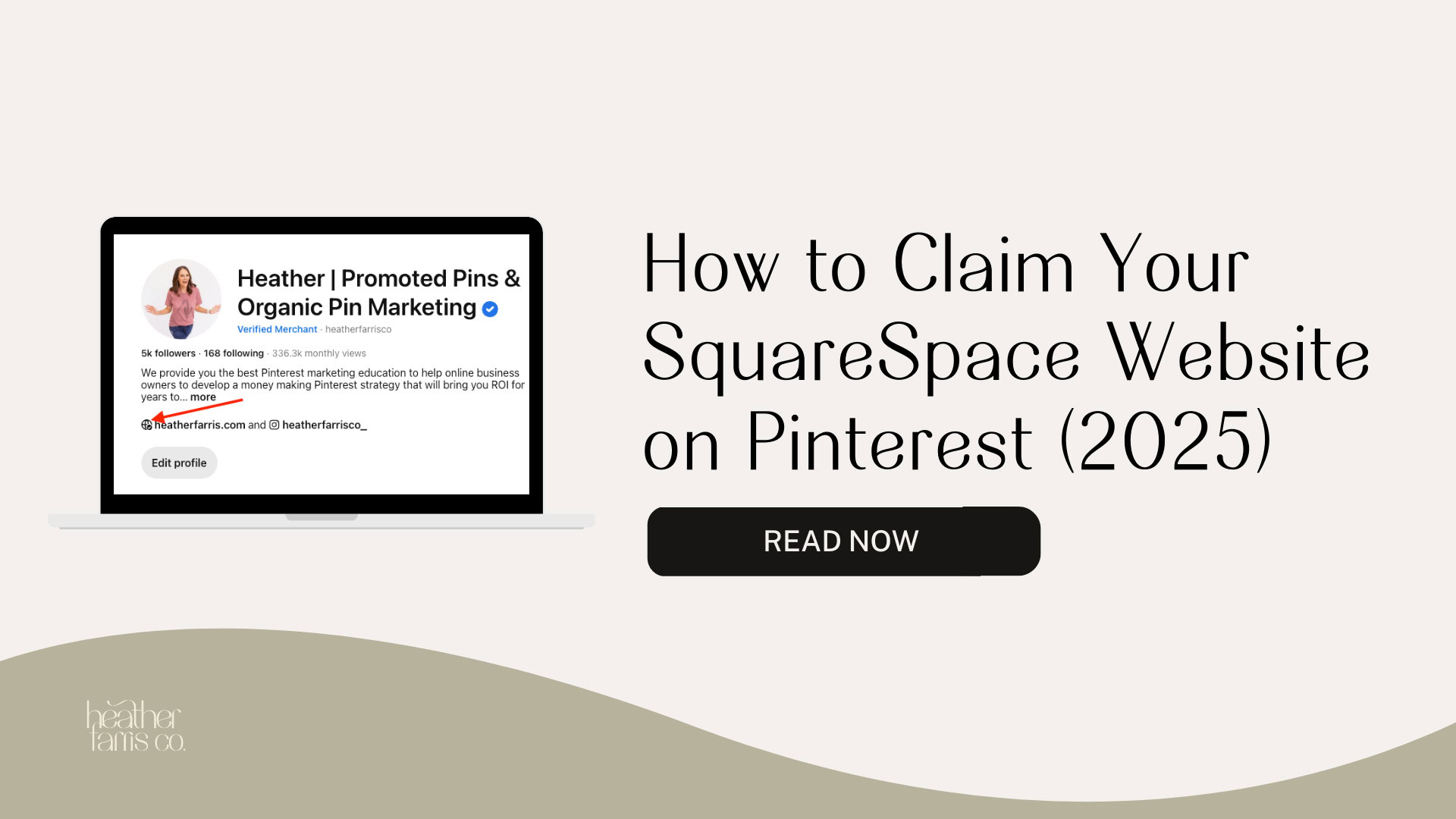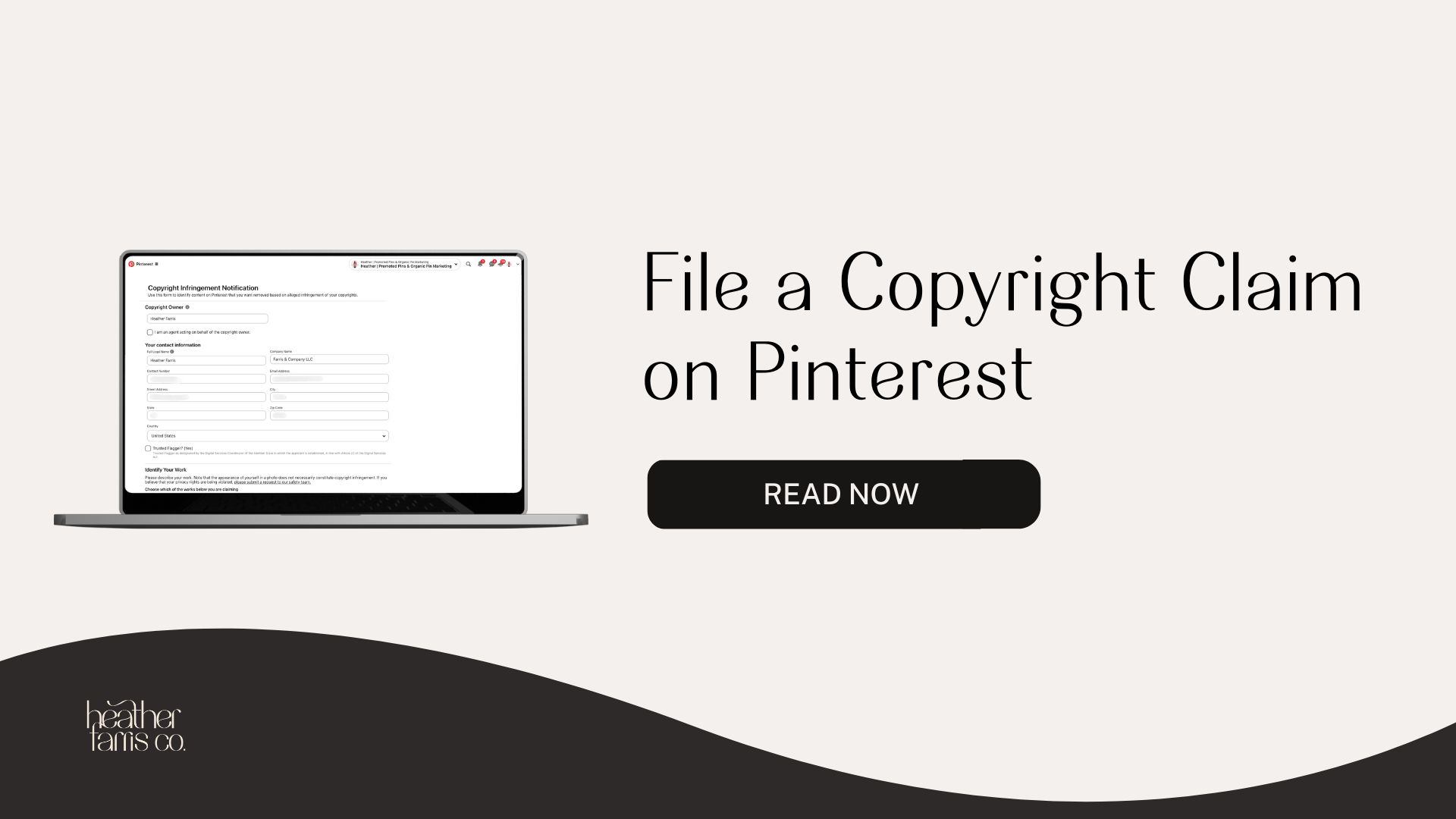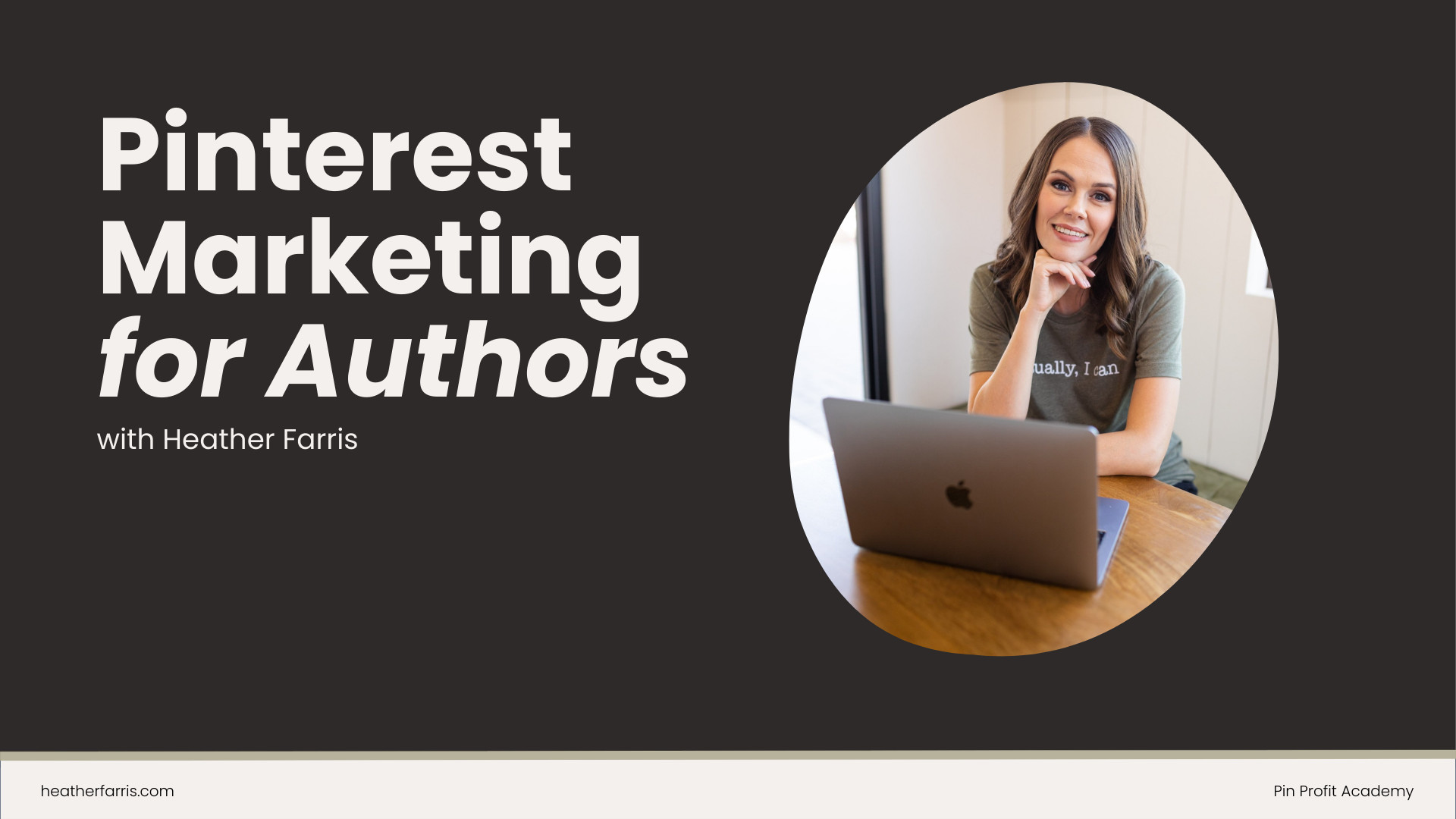Heather is a seasoned
Pinterest marketing expert & educator using the platform since you could reach the bottom of the feed - 2010.
About Heather Farris >
How to Sell Digital Products to Your Email List
September 4, 2024
You can sell digital products to your email list by simply creating a community that actually wants to hear from you instead of something that just feels transactional.
I don’t want a church-style bulletin landing in my inbox from you every single week. That’s boring and a lot of people do it. I wouldn’t want it. Feels gross. It’s not going to make me buy anything from you.
But I don’t want you to feel like every email you send needs to sell for you either. These emails are also there for you to build ‘know, like, and trust,’ build your community, and get your community ready to buy from you when the time comes.
Using analytics to track income sources
Every week, I open my Google Analytics and see reports like this. Reports that show I have had referral income for the last 30 days totaling $4,493 in product sales.
These are digital products through Thrive Cart, Shopify, and other funnels that I have. Then, you also see things like Shopify free listings with a total income of $27. These are free offers I have linked in my Shopify store that get people into my email list, and then I go on to sell to them later.
Then, even further down the report, you see a heading that says introducing the Notion Pinterest System. And that also has sales for $54. Now, that email just went out last week. It went out late Friday afternoon.
Not a lot of sales have been generated from it, but I am happy it generated $54 in sales. It has generated even more since then. I have received emails today from people saying, “Hey, we’ve just purchased. So excited for this.”
RELATED: The Ultimate Guide to Create and Sell Digital Products
Referral sources that get to your email list
I want to define what ‘referral’ means because you will likely see this in your Google Analytics in the future as well if you employ a strategy like this. Sprout Social defines referrals as the people who come to your domain from other sites without searching for you on Google.
When someone visits a link from a social media network or website and they end up on another site, tracking systems from Google recognize that visitor as a referral. Companies also use UTM codes to track precisely where these traffic sources come from.
The nitty-gritty of that means the content of my emails sent people to other websites like YouTube, and then the referral traffic comes through from there. I’m going to show you exactly what I mean in a moment.
RELATED: The Ultimate Pinterest Traffic Strategy for Bloggers & E-Commerce Shops
My newsletter strategy for selling digital products
The first things first, I want to talk about today is the newsletter of my email marketing strategy. I send two weekly newsletters every week. I used to only send one, but then bumped it up to two recently. That meant, for the most part, I was only sending four emails per month. That’s only four chances for people to see anything from me in a month.
Not everyone on your email list is going to see everything from you. I have an email list of just over 5,000 people, and my average open rate is 50%. So, given that, people are only seeing two emails from me a month, which is why I bumped it up to 8.
Story based emails leading to sales
I recently invested heavily in an email marketing strategy from Email Marketing Heroes. I was on their email list and they were so good! They are story-based, very short, and to the point, often less than 200 words. They start and they end up with a lesson. The lesson leads you to the call to action, and the story pulls it all together.
So, I employed their strategy within my email marketing service for a few weeks and started noticing something crazy. I was getting sales. I was getting sales from my emails without ever purchasing their strategy by just mimicking what they did in their emails.
RELATED: 5 Types of Content Creation You Need to Generate More Sales
Click tricks strategies
I signed up for their Click Tricks freebie: 12 Creative Ways to Get your email click-throughs higher.
Since I implemented their strategy of newsletters into my weekly newsletter methodology, (this is when I was only sending one email a week), I started noticing a higher join rate to my membership. People were joining the membership from the newsletters, which hadn’t been the case before.
Seeing that little bit of a win (1 to 2 people every couple of emails joining my membership), I decided to jump into the Email Marketing Heroes membership. Now, it is not cheap. It is like $150 a month, but I immediately employed their Bottomless Email Strategy, their newsletter strategy.
From there, I started to see things shift. After implementing their email strategies in newsletters, my referral sales increased. So, my referral income in that graph also started to go up. Which tells me that the campaigns I was running in emails were working. Even though people were not buying directly from the newsletters, the newsletters I was sending were working.
RELATED: The Membership Tools I Use to Grow & Manage my Membership Site
YouTube video newsletter
Let’s talk about a couple of my newsletters and what those look like.
So, my very first email every single week is a YouTube video. I am sending them a newsletter about a YouTube video I upload every Tuesday. I have a story or a lesson that I want to tell about that YouTube video to get them to watch it.
That YouTube video is where I do the selling because people trust me more when they watch me on video. Then they follow through and go on through email and do whatever they do on the other side, which might result in sales.
RELATED: How To Get Traffic To Your YouTube Channel Using Pinterest
Notion Pinterest System example
Here is an example of this most recent email about the new Notion Pinterest System I launched. This Notion Pinterest system is actually less story-based of an email than others but it was more of an update. This shows that you can still write short and sweet emails that don’t necessarily have to be super story-based and generate sales from them.
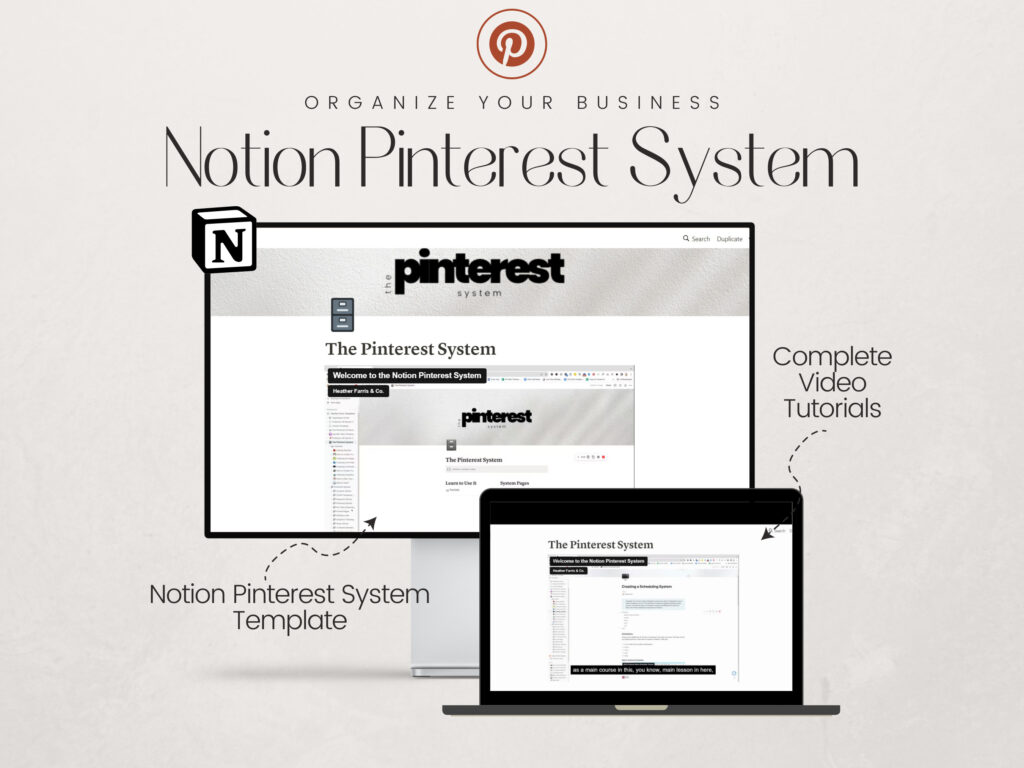
The Pinterest System For Notion
This system alone has been purchased over 4000 times!
The Pinterest System is a necessity to keep track of all of your content, links, keywords, analytics & more, even for clients.
No more wasted times means more profit in your business because your time is money too.
Adam Sandler story example
The following example, however, is story-based. This was my Adam Sandler email. This one resulted in a sale for my services.
This email was generated from a thought, an idea, a frustration that I have with people sliding into my DMs or my emails every single day saying, “Hey, hire me, and I can make your YouTube thumbnails better and grow your channel more. Hey, hire me so I can make your Instagram look better and you can sell more.”
It’s always for more sales, more views, more engagement. I don’t care about aesthetics. I was so frustrated with the amount of people pitching me for creating better thumbnails or Instagram posts that I wrote a thread about it. That thread did well, so I turned it into an email that afternoon.
That resulted in a flood of emails in my inbox, including one from Lindsay, asking for services. She said this email was so good and asked what it would cost to do a Pinterest audit and clean up her boards.
You don’t need to be aesthetic to make sales. Then 12 to 15 emails from other people, including DMs on Instagram, said that email is fire, which meant I connected that story to the person I was writing it to.
Crafting your story-based email
Now, how I come up with stories for email marketing from newsletters is slightly different from how Rob and Kennedy teach in their Bottomless Email Strategy. It is only because I just started using story-based marketing this year.
I even mimicked some of their newsletters using examples from my own life. Once, they wrote an email about something that they lost or they misplaced. I pulled something deep out of my consciousness about putting my blender, my mixer beaters in the refrigerator, and my milk in the pantry. I was pregnant with my first child. You have a pregnancy brain. And that email did really well too. I got lots of replies to that one as well.
The way that you come up with stories for your emails is by:
- (sometimes) looking at what other people are talking about and relating something similar
- listening to your audience
- digging deep into the pain points your audience has
- using the pleasure points of products that you sell
- speaking to those from personal points of view
Finishing with call to action
Then, you finish your story with the lesson at the end, one of the most important things. Then, you link them to what you want them to do.
Do you want them to read a blog?
Are you wanting them to watch a video?
Or you want them to look at your new product that you just launched?
What is it that you want them to do?
I always like to start at the end and work my way back to the beginning because that’s easier for me to make sure the call to action makes sense. You want to send them to where you do your best conversions, great way to naturally increase sales.
For me, it’s usually YouTube. This is why the majority of my traffic and my sales in Google Analytics say referrals.
RELATED: How to Create a Pinterest Conversion Campaign (Step by Step Tutorial)
Email sequences
Let’s talk about email sequences because this is the second tactic I use in my business and my email marketing strategy to sell for me on autopilot. This one truly is evergreen, and it truly is passive.
I hired someone once to write an email sequence for me, a five-part email sequence that runs automatically in my email service provider. I have since updated the email sequence, subject lines, and links to improve it and perform better. I’ve had this in my business for about 15 to 16 months, and over that time, it has generated quite a lot of sales.
Below is a screenshot of my business for the last 12 months. If you look at the top right-hand corner of the table, you’ll notice it says $30,738.80 in sales. And then, over on the left is a table of all the email campaigns sent. So, I’ve generated over $30,000 in the last 12 months from email marketing alone. Now tell me how much of a difference $30,000 in your business would make for you and your family.
I have a tiny list. It only crested 4000 people this year in October (as of this writing), and I put on 1000 people in four weeks because of a Facebook ad I ran. Most of those thousand people are probably not even great fits for my overall audience. And I just scrubbed my list of 600 people as well. I frequently delete people off my list who are not opening my emails and are not engaging with me. And I do that four times a year.
RELATED: Pinterest Analytics: A Simple Guide to Read & Analyze Your Data
Nurturing your email list
Now, most people are not going to convert right away from email. That’s the whole point of email, to nurture people to the sale, to nurture people until they are ready to purchase from you. That’s how to sell digital products to your email list, with nurturing.
I love doing freebie marketing because it allows me to have an open line of communication with the people on my email list. I am always selling and providing value, but I don’t always have to get people on the email list by selling a product to them first.
Primarily, I have people coming onto my email list with my free strategy guide for Pinterest. Then they’re delivered more free content which leads to course sales inside of my membership: Pin Profit Academy. Nurturing your list through email is a great option once you have a product setup for sale, say in your Etsy store or other small digital products you can offer.
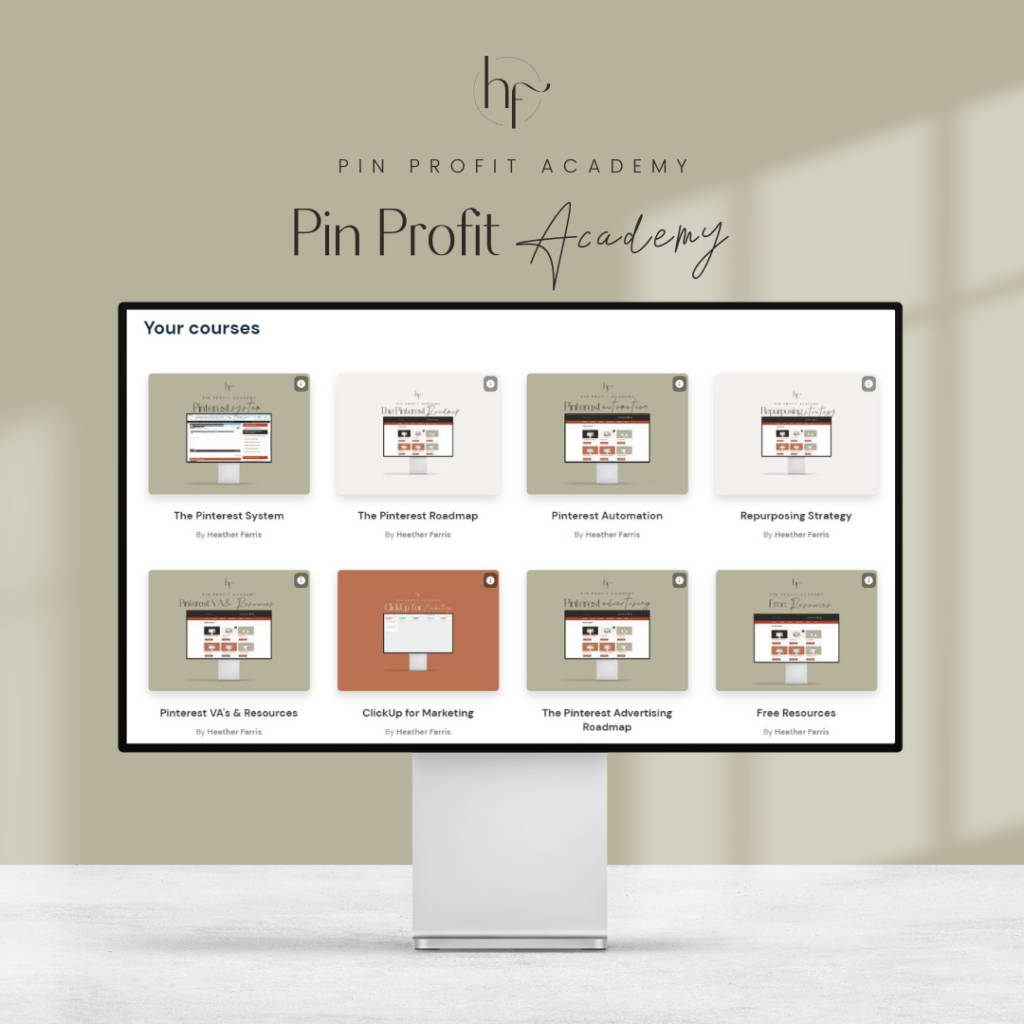
Pin Profit Academy
Marketing can be difficult and trying to figure it out on your own, especially with Pinterest, can be overwhelming.
I will show you how to double your traffic and sales without spending another minute on social media!
PPA is the only comprehensive membership program & community for creating, marketing & selling your products & services using Pinterest.
Selling in email sequences
Now, I’m going to show you another screenshot, and you can see some email campaign names on the left. So, the “Don’t pay 2K for that” is the last email of the five emails in the sequence.
They all generated sales for my membership academy product, but this email especially. I also have digital products in the membership running in the background. All I had to do was get people on the email list.
Action items for how to sell digital products to your email list
So here are your action items for today for how to sell digital products to your email list. Think through how you’re going to go through and put this into place for your business.
#1. You’re going to get a free offer in place and get a delivery email sequence set up for that. I have a lead magnet training video on my channel if you want to watch it.
#2. You’re going to get an upsell sequence that goes behind that free lead magnet, and you’re going to get that in place and set up and automated. So when people finish the lead magnet training or the free lead magnet that you have, they then go through your sales sequence to get to the next step.
#3. You’re going to brainstorm your newsletter strategy. Your newsletter does not need to be a thousand words long. I don’t have to write a ton of content for my emails. I usually can write them in 10 minutes or les, two newsletters a week. I’m working on getting up to a third.
Now, 90% of the time, my emails are story-based. 10% of the time, they are updates, changes, or new product announcements. So keep that in mind. That is not like a black-and-white thing, by the way. You can do whatever you want. That’s the power of email marketing.
#4. Last thing, consider Email Marketing Heroes for a month or two and at least learning their bottomless email strategy. You can get the Click Tricks freebie if you want to start there. I suggest joining the Email Marketing Heroes league membership for at least a month or two and learning the Bottomless Email strategy. That’s the newsletter stuff. They also have a library of content for email sequences that you can write and employ in your business immediately.
RELATED: How to Create a Lead Magnet That Converts in 4 Easy Steps
Final thoughts on how to sell digital products to your email list
I hope you have fun with email marketing because I think I’ve proven how powerful it is, even with a small email list. Don’t miss this opportunity to become better at email marketing to sell your digital products. Just make sure to implement all you have learned with how to sell digital products to your email list.
Now you know best practices for how to turn your email list into a powerful sales asset and tap into a new stream of semi-passive income. Apply these tips and insights to take your email marketing strategy to the next level for creating long-term success with your business.
Pin it for later
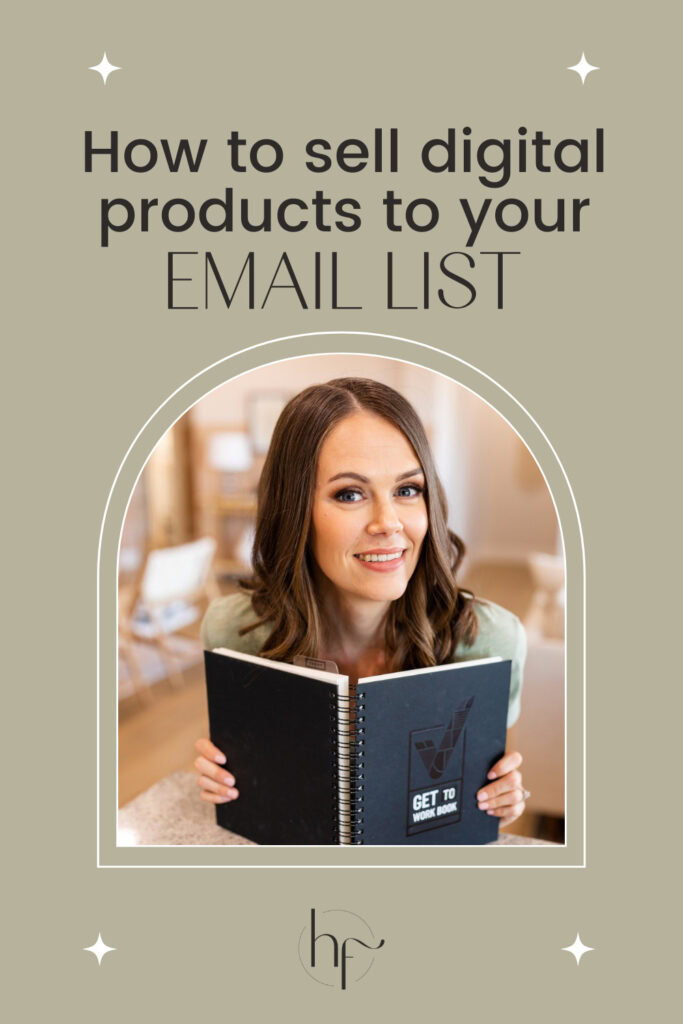
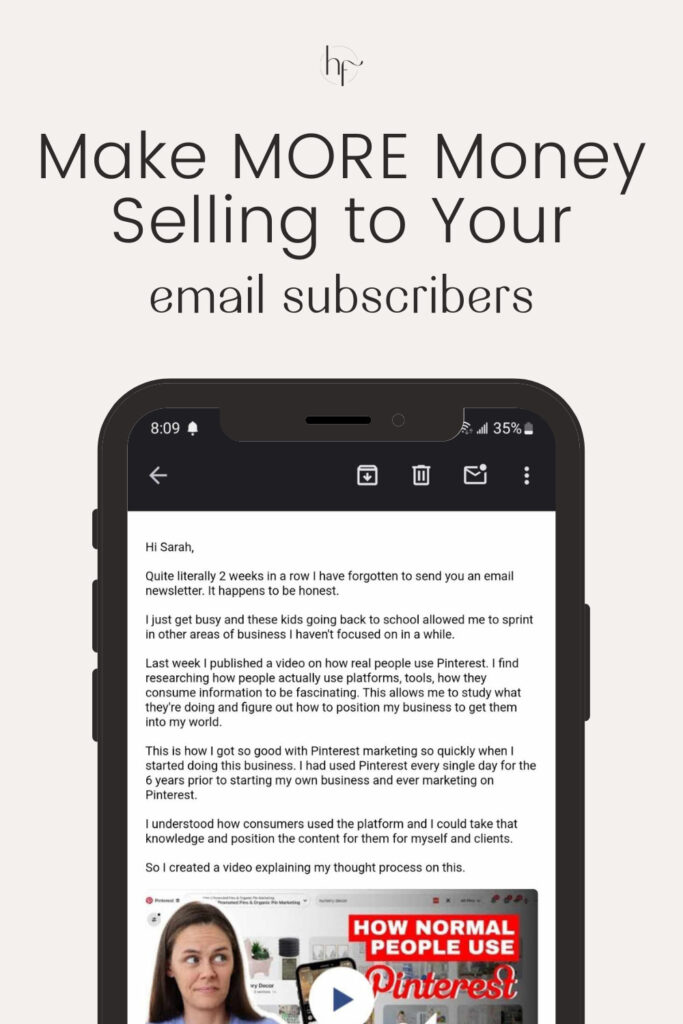
Heather Farris went to school for accounting and worked for years in banking and finance. After finding all of that entirely too boring she started her first blog in her basement in August of 2016. She has started 3 blogs in the marketing, motherhood and travel niches and used Pinterest to grow them all. She quickly became the go-to Pinterest strategist in her peer circles and has been implementing strategies, driving traffic and sales through organic and paid tactics for her clients. On this blog and her YouTube channel, as a renowned Pinterest marketing expert, she educates the public about clear and transparent marketing strategies to help them to grow on Pinterest and in other places online as a renowned Pinterest marketing expert.
